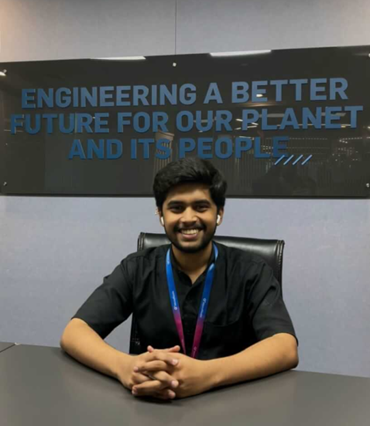Let’s find your next opportunity
AI Assistant: {{ chat.assistant.message }}
Suggested roles matches
Sort By
{{ job.job_posting_title }}
{{ job.is_cms_job ? (job.cities.split(';').length > 1 ? 'Various locations' : job.location_mappings[0]) : (job.location_mappings.length > 1 ? 'Various locations' : job.location_mappings[0]) }}
We are sorry there are no jobs that match your exact criteria. Try a new search term, or use the filters to continue browsing for available opportunities.
Suggested roles matches
{{ job.title }}
{{ [job.cities[0], job.regions[0], job.countries[0]].join(', ') }}
Various locations
We are sorry there are no jobs that match your exact criteria. Try a new search term, or use the filters to continue browsing for available opportunities.
Let’s find your next opportunity
{{ job.job_posting_title }}
{{ job.is_cms_job ? (job.cities.split(';').length > 1 ? 'Various locations' : job.location_mappings[0]) : (job.location_mappings.length > 1 ? 'Various locations' : job.location_mappings[0]) }}
The 2034 FIFA World Cup in Saudi Arabia and the 2027 Asian Football Confederation (AFC) Asian Cup are both set to take place in the bustling and evolving KSA.
The AFC Asian Cup 2027 will mark the first time the event will be staged in the KSA, with the AFC Member Associations confirming the Saudi Arabian Football Federation (SAFF) as the host association back in February 2023.
Meanwhile, the Kingdom's bid for the FIFA World Cup 2034 is generating global excitement across social media with Cristiano Ronaldo's endorsement fueling the buzz.
Saudi Arabia is diversifying and transforming its economy away from oil, with this being a key Pillar to Vision 2030 and the increased focus on developing sports infrastructure ahead of both the FIFA World Cup and the AFC Cup falls into this pillar.
AtkinsRéalis has been helping shape the Middle East for over 50 years and we are proud to rank number one in the region's Top 30 engineering, procurement, and construction companies.
Our professionals play a vital role in helping the Kingdom with its ambitious plans for future stadiums and sports infrastructure. At AtkinsRéalis, it's our mission to engineer a brighter, greener future for the Middle East and beyond.
Overview of the future stadiums in Saudi Arabia
Aside from the established and well-known stadiums like the King Abdullah Sports City Stadium and the King Fahd International Stadium, there are more state-of-the-art projects underway ahead of these sporting events. We've expanded on three below.
Dammam Football Stadium
Dammam Stadium will be situated in the Dammam Sports City area.
The stadium is being fast-tracked and is likely to be completed by the first half of 2026 in time for the 2027 AFC Asian Cup.
Plans for the infrastructure highlight that the stadium will be constructed over around 800,000 square meters and can accommodate up to 45,000 people.
Jeddah Stadium
As a FIFA standard football stadium, Jeddah Stadium is an exciting project. Announced in 2021, the stadium is expected to be operational by 2030 offering an architectural marvel that meets international sports standards.
With air conditioning and a seat capacity of 45,000, Jeddah Stadium will be fitted with entertainment arenas, open spaces, and green parks while blending local architecture with cutting-edge technology.
Prince Mohammad bin Salman Stadium
Situated on a cliff in the proximity of Qiddiya city, this new stadium will have the capacity to accommodate 45,000 spectators, featuring a retractable pitch and an LED wall.
As one of the proposed venues for the 2027 and 2034 games, the Prince Mohammad bin Salman Stadium is expected to be ready by the end of 2026, a similar time to that of the Jeddah Stadium.
The key roles assisting with sports infrastructure in the Kingdom
Building sports infrastructure that meets the demands, requirements, and capacities for hosting the FIFA World Cup involves building a team of skilled professionals across engineering, project management, construction, and consulting.
From design and planning to construction and safety, a plethora of roles are needed to make these visions a reality. We've broken down just some of the roles at AtkinsRéalis that can contribute to these groundbreaking stadiums.
- Structural Engineer
- Civil Engineer
- Mechanical Engineer
- Electrical Engineer
- Geotechnical Engineer
- Project Manager
- Construction Manager
- Site Engineer
- Safety Manager
- Procurement Manager
- Architect
- Sustainability Consultant
Whatever your career stage, there's never been a better time to join us
From NEOM and AlUla to New Murabba and the Red Sea Project, our professionals in the Middle East are putting their expertise towards the development of key milestones in Saudi Vision 2030 and beyond.
Browse our available roles today to play a part in connecting people, data, and technology.
Browse more insights from AtkinsRéalis Middle East.
Related blogs
Related jobs
We are sorry there are no jobs that match your exact criteria. Try a new search term, or use the filters to continue browsing for available opportunities.

Everyone belongs
We empower each individual to shine and contribute to our collective impact. We believe in the power of unique perspectives. It’s how we’re engineering a better future every single day.













